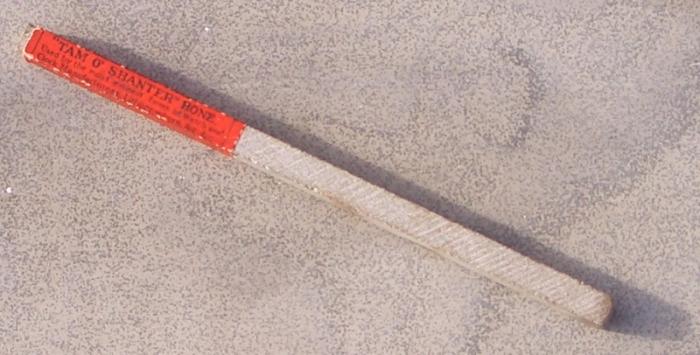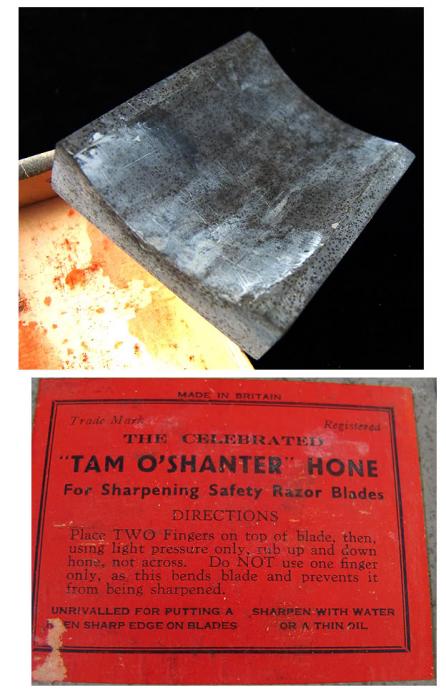Results 11 to 17 of 17
Thread: Slurry Stone question.
-
07-20-2010, 12:28 AM #11I used Nakayamas for my house



- Join Date
- Aug 2009
- Location
- Des Moines
- Posts
- 8,664
- Blog Entries
- 1
Thanked: 2591
-
07-20-2010, 12:42 AM #12

If you are already familiar with the coticule, just try the TOS and find out for yourself. See what it does to already honed razor, then see what it does during the sharpening stage.
I can tell you what I've found out, but that's not going to help you much, because you haven't been able to separate the grain from the chaff from the stuff you've already read. So your best option is to find out by trying it out.
Use the diamond hone that you have to create the slurry.
-
07-20-2010, 08:22 AM #13

Once in a while I see ToS sticks at Ebay. These are jeweler's tools and about 4x0.5x0.5" in size. They might be still for sale at specialised webshops. You could try use such a stick as slurrystone.
-
07-20-2010, 08:59 AM #14Ultimate Laid-Back Hero

- Join Date
- May 2010
- Location
- England
- Posts
- 263
Thanked: 67
Like this??
Water of Ayre Stone 3/8 x 5''
Do you think it's really an Ayr? I suppose that it is, and would make a great slurry stone.
-
07-20-2010, 10:29 AM #15Senior Member



- Join Date
- Apr 2008
- Location
- Essex, UK
- Posts
- 3,816
Thanked: 3164
If I was you I would phone them and ask before ordering it - most jewellers these days use synthetic equivalents, not the real thing.
A lot of the places I have talked to used to get their stones from the Tam O'Shanter works, but the owner became so unreliable (didn't answer calls/didn't return calls/didn't fulfil existing orders) that they dropped this item and stocked a synthetic equivalent instead.
The only bona-fide ToS jewellers sticks that I have come across are old stock - such as Piet has already referred to. Most of them are so thin though that they aren't much use for slurry stones.
Regards,
Neil
-
07-20-2010, 05:45 PM #16

The outfit in the UK that sells the dragon's tongue had a WOA on their website a couple of years ago. I called and inquired and it was a Tam not a WOA. So Neil's advice is sound IME. Also, a DMT (dia-sharp co.) credit card sized diamond plate (coarse 325) will be very useful in generating slurry for any stone that doesn't have a matching slurry stone.Cost about $6.00 IIRC.
Be careful how you treat people on your way up, you may meet them again on your way back down.
-
07-21-2010, 02:51 PM #17

+1
My guess is Piet was thinking of old lithographer's sticks, not the new 'WoA' for jewellers. They look like this:
A similar option are the small concaved blocks originally sold for DE blade sharpening:
Both can, with patience, be found on eBay and elsewhere for as little as a few dollars.
Three concerns: first, it would be degrading a collector's item (but in my opinion preferable over cutting up an intact large hone just to obtain a matching slurry stone); second, they weren't contrived as slurry stones and their shapes make for slightly awkward use as such; third, there are at least two types of TOS: the ordinary, and a finer variety sometimes labelled as White TOS. Not precisely sure about the following, but the DE sharpening blocks seem to be ordinary variety, whereas the lithographer's sticks can be found of both types.
-
The Following User Says Thank You to Oldengaerde For This Useful Post:
Piet (07-24-2010)


 LinkBack URL
LinkBack URL About LinkBacks
About LinkBacks







 Reply With Quote
Reply With Quote
